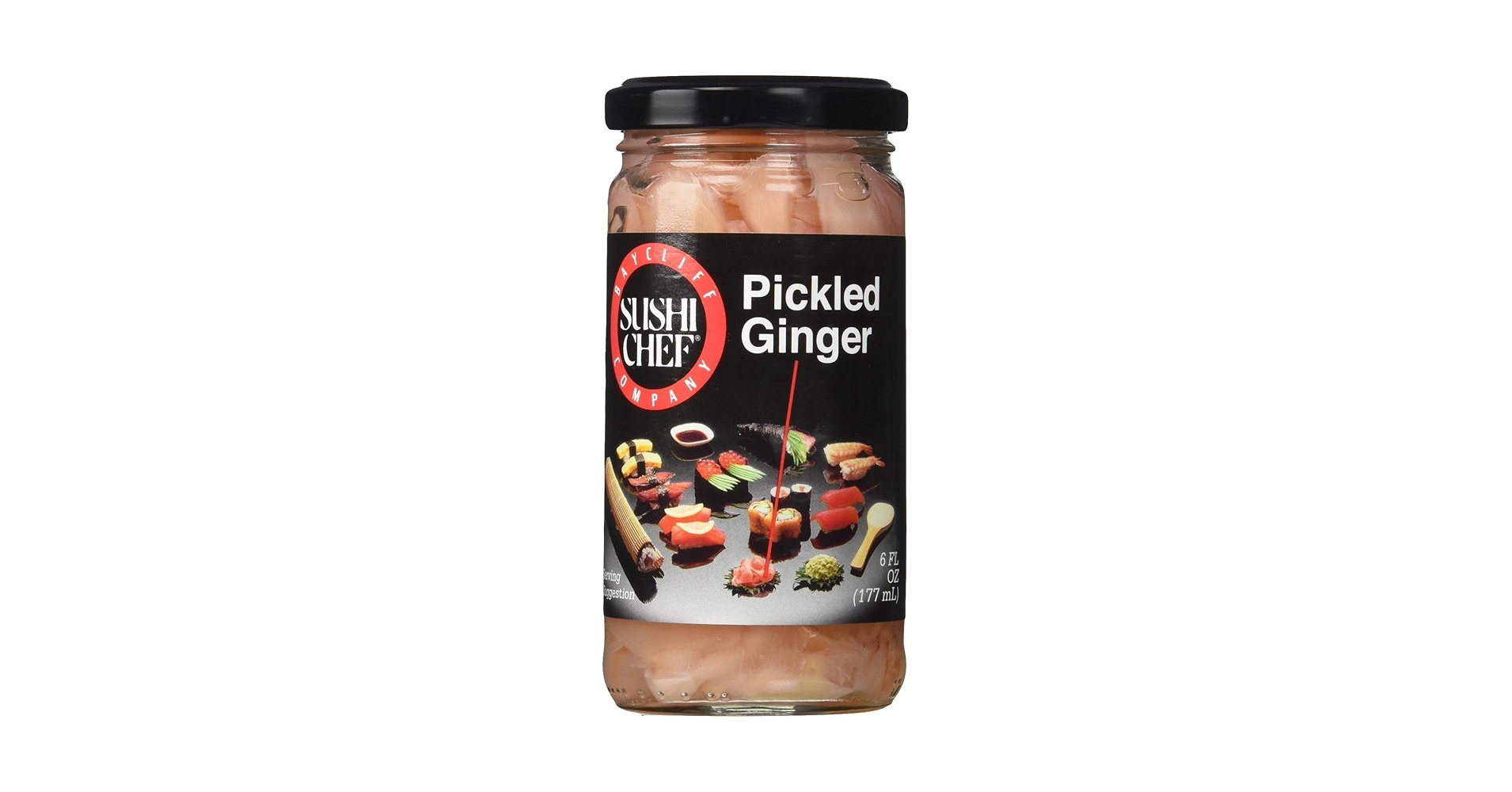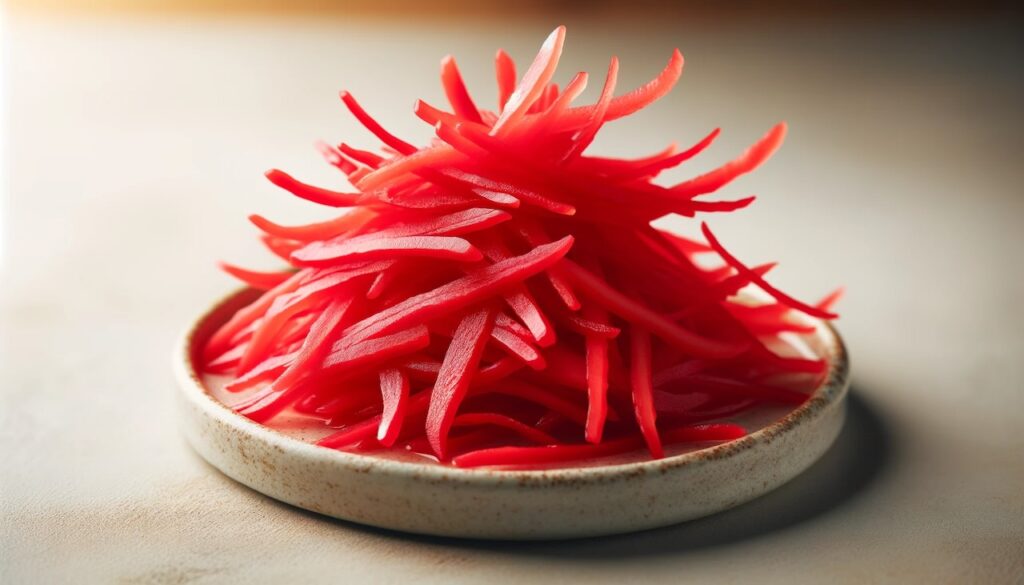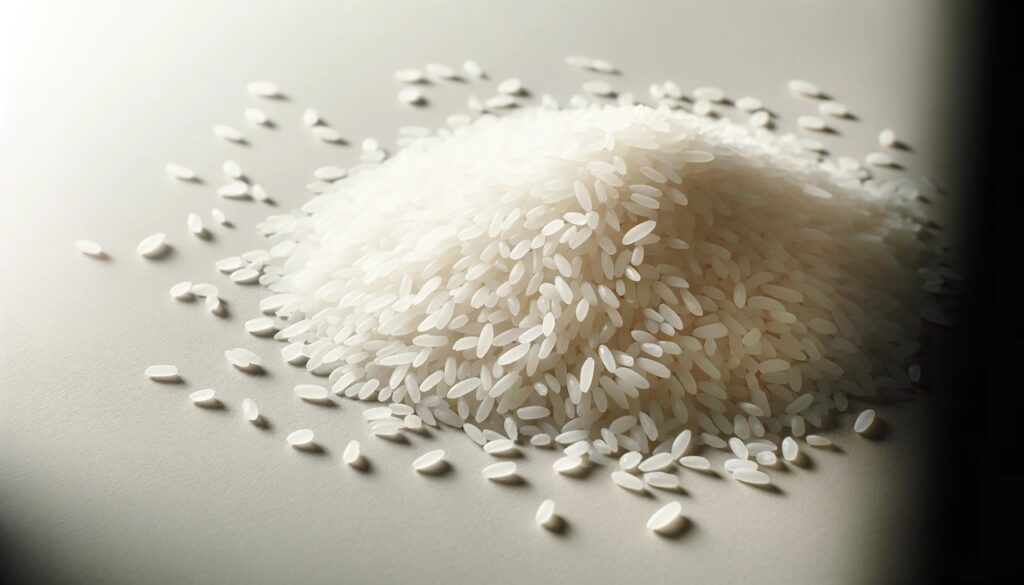With its eye-catching color and sharp, refreshing flavor, beni shoga (pickled red ginger) is a beloved accent in Japanese cuisine.
Often seen alongside dishes like gyudon (beef bowl) and okonomiyaki (savory pancakes), beni shoga isn’t just a tasty sidekick—it also offers surprising health benefits.
Let’s dive into what makes this vibrant pickle so special for both your palate and your health.
The Health Benefits of Beni Shoga
1. Antioxidant Boost for a Stronger Immune System
Beni shoga is rich in antioxidants that help neutralize harmful free radicals in the body.
By reducing oxidative stress, these compounds may support a stronger immune system and promote overall health.
2. Digestive Support and Improved Circulation
Thanks to the ginger it’s made from, beni shoga can:
- Aid digestion:
Helping ease feelings of fullness or indigestion after heavy meals. - Promote better blood circulation:
Which may assist in relieving cold sensitivity and boosting energy levels.
No wonder it’s been a staple in Japanese meals for generations!
How Much Beni Shoga Should You Eat?
Recommended Serving Size
To enjoy its benefits safely, aim for around 15–20 grams per day—roughly one tablespoon.
Why Moderation Matters
While moderate amounts are beneficial, eating too much beni shoga can lead to:
- Digestive discomfort, especially for those with sensitive stomachs.
- Mild allergic reactions in individuals sensitive to ginger.
- Excess sodium intake, due to its pickled nature.
As with many things, balance is key.
Why Beni Shoga Is the Perfect Companion to Gyudon
In Japanese food culture, pairing beni shoga with gyudon isn’t just about flavor—it’s about harmony.
- Flavor balance:
The tangy, slightly spicy bite cuts through the rich, savory flavors of the beef and rice. - Texture contrast:
The crunch of beni shoga adds a refreshing counterpoint to the soft textures of gyudon, making each bite more dynamic and satisfying.
It’s a small addition that transforms the entire meal.
Cooking with Beni Shoga: Tips and Tricks
Beni shoga isn’t limited to gyudon! It can brighten up many dishes—if you use it wisely:
- Add it at the end:
To preserve its color, crunch, and zing, add beni shoga just before serving. - Chop finely:
Small pieces help distribute its flavor evenly without overpowering the dish. - Adjust to taste:
Start small—you can always add more if you want an extra punch.
Easy Recipes Featuring Beni Shoga
Looking for new ways to enjoy it? Try these simple ideas:
- Potato Salad with Beni Shoga:
Stir chopped beni shoga into creamy potato salad for a tangy twist. - Beni Shoga Onigiri (Rice Balls):
Add a surprise pop of flavor by mixing beni shoga into rice before shaping. - Beni Shoga Dressing:
Blend it into a light vinaigrette to add zest to salads and grilled vegetables.
Conclusion: A Flavorful Path to Better Health
Beni shoga is more than just a pretty garnish—it’s a delicious way to support your health naturally.
Packed with antioxidants, digestive-friendly compounds, and circulation-boosting properties, it deserves a place in your diet.
Enjoy it in moderation, pair it thoughtfully with your meals, and choose high-quality beni shoga for the best flavor and benefits.
With each tangy bite, you’re not just enhancing your meal—you’re making a smart choice for your well-being.



